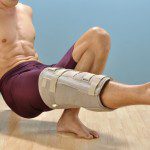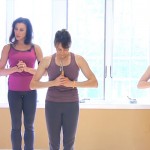Joseph Pilates was the mad scientist of fitness. As a teenager, he experimented on his own sickly body to achieve the physical transformation promised by his fitness method. Studying a global spectrum of exercise techniques (including gymnastics, boxing, and martial arts), he worked for decades to perfect his exercise techniques and the equipment to achieve them.
In his adulthood, Joe was like a massively productive, well-oiled machine. He opened a studio devoted to his method and gained the following that would perpetuate the Pilates method for decades to come. He published books on integrated fitness and built his original workout machines by hand. But for all that creativity and energy, Joe was only human, after all. If you dig into his history, a couple of harebrained schemes and experiments gone awry are bound to emerge from the dust of his most famous accomplishments.
In earlier blogs, we looked back on the Pilates system’s origins in the British internment camps of World War I. (More reading: “What’s in a Name? Funny Pilates Terms Explained,”) In an effort to keep his fellow inmates healthy and strong under sometimes deadly conditions, Joe began to develop both the exercises and the equipment of his fitness method. Before the Cadillac, there was the “bednasium,” which is exactly what it sounds like — a barracks bunk or hospital bed outfitted with mattress springs for resistance. This earliest incarnation of the traditional Pilates apparatus enabled someone to get exercise in spite of his situation or physical condition.
Fitness journalists have described Joe as being on a “fervent mission” to refine his inventions and create the perfect fitness equipment. Not content to settle with just an exercise bed, after the war Joe went on to work on a whole apartment of fitness furniture in his Manhattan studio, even going on to file patent applications for a line of “Pilates Automated Balanced Health Furniture.” Now, that’s a mouthful. The original Health Furniture line was never patented, although a certain “stiff-backed high chair” included in the collection sounds very familiar to anyone who’s worked out on a modern Electric Chair (we have one in our studio!).
Joe’s legacy is the classical fitness method that bears his name, along with the suite of apparatus that he perfected in his lifetime. (More reading: “The Dynamic Fitness Guide to Classical Pilates Apparatus,”) Classical Pilates has proven to be no fad or flash in the pan, nor did it follow Joe out when he left this world in 1967. Beginning with the Pilates “elders,” new generations of Pilates instructors have taken Joe’s magnum opus to the next level. With the creativity and expertise of each new instructor, the Pilates method grows with adaptations for different levels of physical ability, in special considerations for bodies recovering from surgery or injury (More reading: “The ‘Return to Life’: Pilates after an Injury,”) and in discovering new ways to challenge oneself to achieve maximum, holistic wellbeing. In our next article, we’ll review some of these “extensions” to the method and how they work.
Sources:
Regina Joseph. “The Father of Invention.” Pilates Style September/October 2006.



